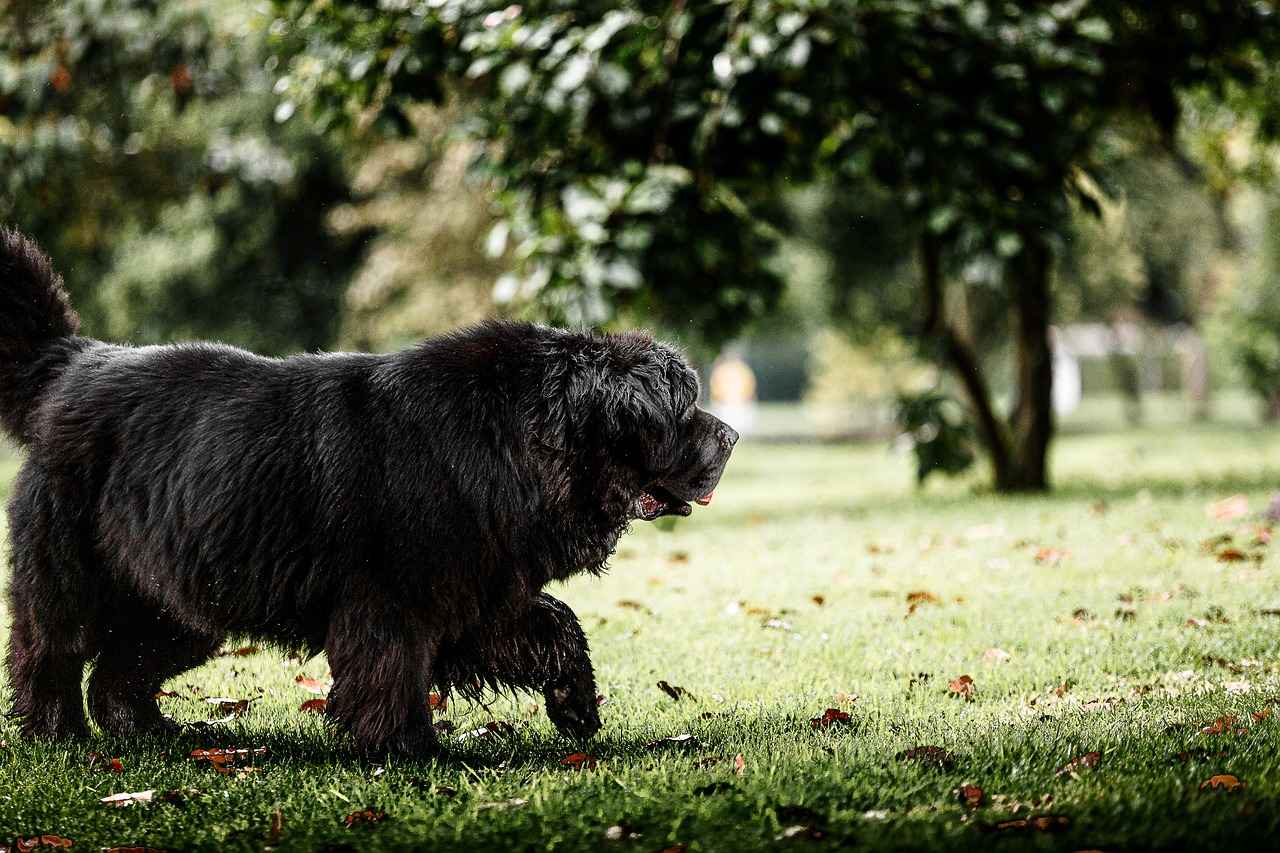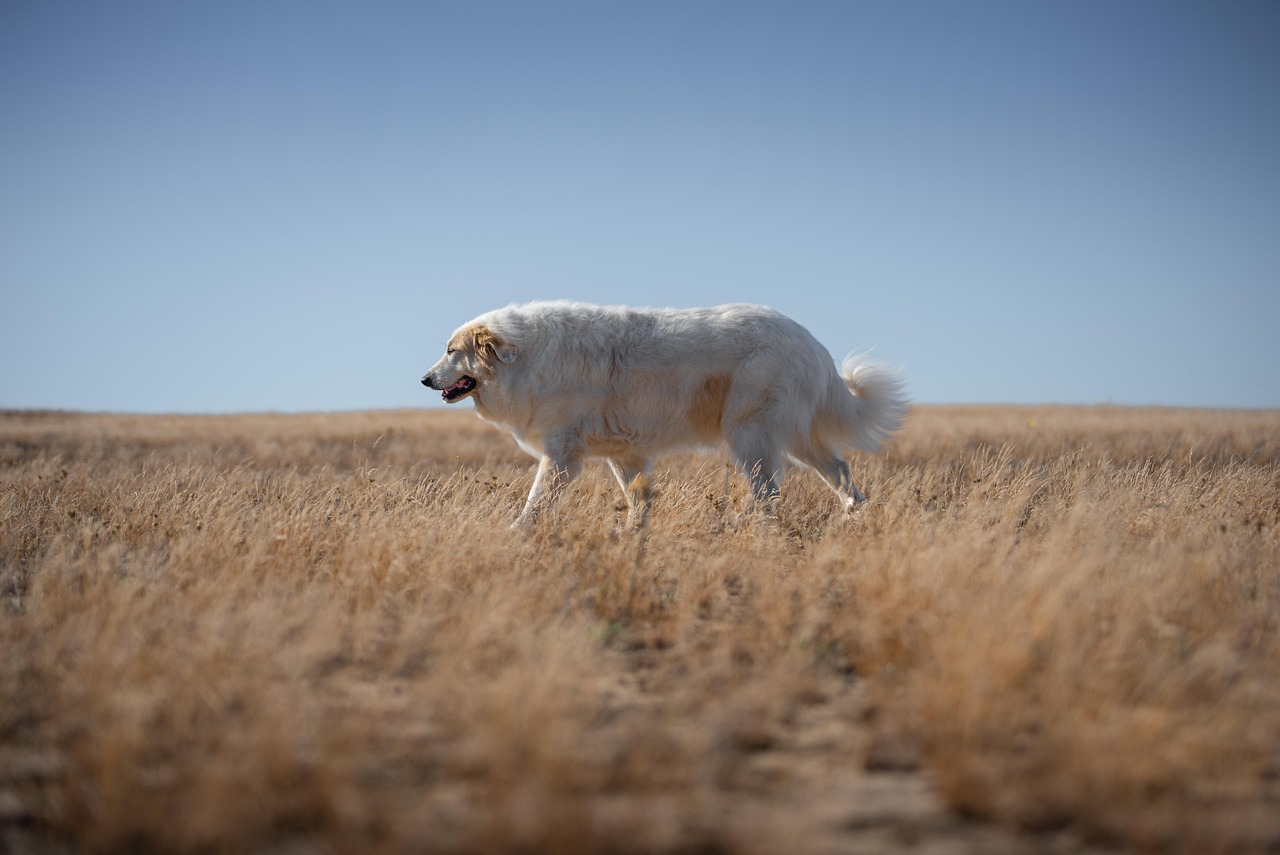This comprehensive guide explores the appearance of flea bites on dogs, their symptoms, treatment options, and preventive measures to help pet owners keep their furry friends comfortable and healthy.
Identifying Flea Bites on Dogs
Flea bites on dogs can be easily mistaken for other skin irritations. Understanding their distinct characteristics helps owners identify and treat flea infestations promptly. Typically, flea bites appear as small, red, raised bumps, often found in clusters. The most affected areas are usually the neck, ears, and belly.
Common Symptoms of Flea Infestation
- Itching and Scratching: Frequent scratching is a primary symptom of flea bites. Dogs may scratch excessively to relieve the itch, leading to potential skin damage and infections.
- Hot Spots: Hot spots are localized areas of inflamed skin that can develop due to persistent scratching. These areas require immediate attention to prevent further irritation and infection.
- Hair Loss: Flea bites can cause hair loss in affected areas. The constant scratching and biting can lead to bald patches, which may become more pronounced over time.
- Behavioral Changes: Fleas can affect a dog’s behavior, leading to increased restlessness or irritability. Owners should monitor their pets closely for any unusual behavior changes.
How to Examine Your Dog for Fleas
Regular examinations can help catch flea infestations early. Knowing how to check your dog properly is essential for effective flea control.
- Visual Inspection: Start by visually inspecting your dog’s skin and fur, focusing on areas where fleas tend to hide.
- Flea Comb Technique: Using a flea comb can help remove fleas and flea dirt from your dog’s coat. This method is effective in detecting infestations and keeping your pet comfortable.
Effective Treatment Options for Flea Bites
If your dog has been bitten by fleas, several treatment options are available to alleviate discomfort and eliminate the infestation.
- Topical Treatments: These are widely used and can effectively kill fleas on contact. They are easy to apply and provide long-lasting protection.
- Oral Medications: These can offer quick relief from flea infestations, targeting fleas at various life stages and preventing future bites.
Preventing Future Flea Infestations
Prevention is key to keeping your dog flea-free. Implementing effective strategies can help minimize the risk of future infestations.
- Regular Grooming: Regular grooming helps detect fleas early and removes any that may be present, promoting a healthy coat and skin.
- Home Environment Management: Maintaining a clean home environment is crucial for flea prevention. Regular vacuuming and washing pet bedding can significantly reduce the chances of fleas taking hold.
When to Consult a Veterinarian
If flea bites cause severe reactions or if your dog exhibits persistent symptoms, consulting a veterinarian is essential for appropriate care and treatment.
- Signs of Infection: If you notice signs of infection, such as redness, swelling, or pus, it’s crucial to seek veterinary care to prevent further complications.
- Allergic Reactions: Some dogs may develop allergic reactions to flea bites. If your dog shows signs of excessive itching or skin irritation, a vet can recommend suitable treatments.
Conclusion
Understanding flea bites on dogs is essential for every pet owner. By recognizing the symptoms and taking proactive measures, you can keep your furry friend healthy and comfortable.

Identifying Flea Bites on Dogs
Flea bites on dogs can often be confused with other skin irritations, making it essential for pet owners to understand their unique characteristics. Flea bites typically appear as small, red, raised bumps, often grouped together in clusters. These bites are most commonly found on areas where dogs have less fur, such as the belly, inner thighs, and around the tail. Recognizing these signs early can help prevent further discomfort for your pet.
One distinct feature of flea bites is the intense itching that accompanies them. Dogs may exhibit signs of distress, such as scratching, biting, or licking the affected areas. Additionally, flea bites can lead to secondary issues like hot spots or skin infections due to excessive scratching.
To effectively identify flea bites, pet owners should be aware of the following:
- Appearance: Flea bites are small, red, and often appear in clusters or lines.
- Location: Common areas include the belly, inner thighs, and around the tail.
- Behavioral Signs: Increased scratching, biting, or licking of the skin can indicate flea bites.
- Flea Dirt: The presence of tiny black specks in your dog’s fur can indicate flea activity.
It’s crucial to differentiate flea bites from other skin conditions such as allergies or dermatitis. If you’re unsure, a thorough examination by a veterinarian can provide clarity and ensure your dog receives the appropriate treatment.
In conclusion, understanding how to identify flea bites on dogs not only aids in effective treatment but also enhances your pet’s overall well-being. Regular checks and prompt action can make a significant difference in managing flea infestations, keeping your furry friend comfortable and healthy.

Common Symptoms of Flea Infestation
Recognizing the signs of a flea infestation is crucial for pet owners who want to ensure their dogs remain healthy and comfortable. Fleas are not just a nuisance; they can lead to serious health issues if left untreated. Here, we will explore the various symptoms that indicate your dog may be suffering from a flea problem.
- Itching and Scratching: One of the most common indicators of flea bites is excessive itching. Dogs may scratch, bite, or lick at their skin in an attempt to alleviate the discomfort caused by these pests. This behavior can lead to skin irritation and open wounds, making it essential to address the issue promptly.
- Hot Spots: Persistent scratching can result in hot spots, which are inflamed and painful areas on the skin. These spots can become infected if not treated, requiring immediate veterinary attention to prevent further complications.
- Hair Loss: Flea bites can lead to localized hair loss, particularly in areas where the dog is scratching the most. This can create bald patches that not only look unsightly but can also expose the skin to infections.
- Behavioral Changes: Fleas can cause significant discomfort, leading to changes in behavior. Dogs may become more restless, irritable, or withdrawn. Observing these behavioral shifts can provide important clues that your pet is dealing with a flea infestation.
- Red or Inflamed Skin: Look for signs of redness or inflammation on your dog’s skin, particularly in areas that are frequently scratched. This can indicate an allergic reaction to flea bites, which may require veterinary intervention.
- Flea Dirt: Another telltale sign of fleas is the presence of flea dirt, which looks like small black specks in your dog’s fur. This dirt is actually flea feces and can often be found in the same areas where fleas are hiding.
By being vigilant and aware of these symptoms, pet owners can take swift action to address flea infestations, ensuring their dogs remain happy and healthy.
Itching and Scratching
are among the most common and distressing symptoms of flea bites in dogs. When a dog is bitten by fleas, it can lead to an intense and persistent itch that drives them to scratch excessively. This behavior is a natural response to alleviate the discomfort caused by the bites. However, excessive scratching can lead to further complications, including skin damage and the risk of secondary infections.
Flea bites typically manifest as small, red welts on the skin, often found in clusters. Dogs may focus their scratching on specific areas such as the base of the tail, belly, and ears, where fleas are more likely to congregate. Owners should be vigilant, as the sight of their dog scratching can indicate a flea infestation that requires immediate attention.
In addition to scratching, dogs may also exhibit signs of discomfort, such as restlessness or irritability. It is essential for pet owners to monitor their dogs closely for any behavioral changes that may suggest a flea problem. If left untreated, the skin can become inflamed, leading to hot spots—localized areas of irritation that can become painful and infected.
To help manage and relieve the itching, various treatment options are available. Topical treatments, such as flea shampoos and sprays, can provide immediate relief by killing fleas on contact. Additionally, oral medications can help eliminate fleas from the dog’s system, effectively reducing the itching sensation.
Preventive measures are crucial in ensuring your dog remains flea-free. Regular grooming and maintaining a clean living environment can significantly reduce the risk of flea infestations. If your dog continues to scratch excessively despite treatment, it is advisable to consult a veterinarian for further evaluation and care.
Hot Spots
, also known as acute moist dermatitis, are localized areas of inflamed skin that can occur in dogs due to various factors, including persistent scratching, biting, or licking. These inflamed regions can develop quickly and may appear as red, swollen patches that are often moist and painful. If left untreated, hot spots can lead to further irritation and even infection, making it crucial for pet owners to address them promptly.
The development of hot spots is frequently associated with fleas, allergies, or underlying skin conditions. Dogs that are prone to excessive scratching or have a history of skin issues are particularly vulnerable. The constant irritation can create a vicious cycle, where the dog continues to scratch the area, exacerbating the condition and increasing the risk of infection.
To identify hot spots, pet owners should look for the following signs:
- Redness and Swelling: The affected area will typically appear inflamed.
- Moisture: Hot spots often have a wet appearance due to the dog’s saliva and the body’s inflammatory response.
- Hair Loss: The fur in the area may be missing or matted due to licking and scratching.
- Pain or Discomfort: Dogs may show signs of distress when the area is touched.
Immediate attention is required to treat hot spots effectively. Pet owners should consider the following treatment options:
- Cleaning the Area: Gently clean the hot spot with a mild antiseptic solution to remove any debris.
- Topical Treatments: Applying veterinary-recommended creams or ointments can help soothe the skin and promote healing.
- Preventing Scratching: An Elizabethan collar may be necessary to prevent the dog from further irritating the area.
- Consulting a Veterinarian: If the hot spot does not improve, seeking professional veterinary care is essential to rule out underlying conditions and receive appropriate treatment.
In conclusion, recognizing and addressing hot spots early is vital for your dog’s health and comfort. By maintaining regular grooming and monitoring your dog’s skin condition, you can help prevent the occurrence of these painful lesions.
Hair Loss
in dogs can be a distressing issue for both pets and their owners. One common cause of hair loss is flea bites, which can lead to significant discomfort and visible changes in your dog’s coat. Understanding how flea bites contribute to hair loss is essential for effective treatment and prevention.
When fleas bite, they inject saliva into the skin, which can trigger an allergic reaction in some dogs. This reaction often results in intense itching and scratching. As your dog scratches to relieve the irritation, the skin can become damaged, leading to bald patches in the affected areas. Over time, these patches may become more pronounced, resulting in noticeable areas of hair loss.
In addition to scratching, dogs may also engage in biting or licking the affected areas, further exacerbating the problem. The combination of scratching and biting can lead to secondary infections, which may complicate the healing process and prolong the hair loss.
- Prevention: Regular flea treatments can significantly reduce the risk of flea bites and subsequent hair loss.
- Grooming: Regular grooming helps to keep your dog’s coat healthy and can assist in early detection of fleas.
- Veterinary Consultation: If you notice persistent hair loss or signs of infection, consult your veterinarian for appropriate treatment.
In conclusion, flea bites can lead to significant hair loss in dogs due to the constant scratching and biting that they induce. By understanding this connection, pet owners can take proactive steps to prevent flea infestations and protect their furry friends from discomfort and hair loss.
Behavioral Changes
Fleas can significantly impact a dog’s behavior, often leading to increased restlessness or irritability. This change in demeanor is primarily a response to the discomfort caused by flea bites. As the itching intensifies, dogs may become more agitated, seeking relief through various means, including excessive scratching or biting at their skin.
It is essential for pet owners to closely monitor their furry friends for any unusual behavior changes. For instance, a normally calm dog may start pacing around the house or displaying signs of anxiety. This behavior can be distressing not only for the pet but also for the owner, who may feel helpless in alleviating their pet’s discomfort.
In some cases, dogs may also exhibit aggression as a reaction to the pain and irritation caused by fleas. This can manifest as growling, snapping, or other defensive behaviors, particularly if the dog is touched in areas where fleas are present. Understanding these behavioral changes is crucial for pet owners, as it can help them take appropriate action to address the flea problem.
Moreover, behavioral changes can extend beyond the physical discomfort of flea bites. Affected dogs may show reluctance to engage in their usual activities, such as playing or going for walks, which can lead to a decline in their overall well-being. Owners should be proactive in addressing these changes, as they can be indicators of a more severe flea infestation that requires immediate attention.
To ensure your dog’s comfort and happiness, it is vital to maintain a regular grooming routine and to keep an eye out for any signs of fleas or related issues. Early detection and treatment are key to restoring your pet’s normal behavior and ensuring they remain a happy and healthy member of the family.

How to Examine Your Dog for Fleas
Regular examinations are crucial in maintaining your dog’s health and comfort. Identifying flea infestations early can prevent more serious health issues and discomfort for your furry friend. Understanding the proper techniques to check your dog for fleas is essential for effective flea control.
Visual Inspection
Begin by performing a thorough visual inspection of your dog’s fur and skin. Focus on areas where fleas are known to hide:
- Neck – Fleas often congregate around the neck area, so check closely.
- Ears – The inner ear can also be a hotspot for fleas.
- Belly – Examine the belly, as it’s a common area for flea activity.
Flea Comb Technique
Using a flea comb is an effective method for detecting fleas and flea dirt. This fine-toothed comb can help remove any fleas present in your dog’s coat. Here’s how to use it:
1. Start at the head and work your way down to the tail.2. Comb through small sections of fur, wiping the comb on a white paper towel to check for fleas or flea dirt.3. Dip the comb in soapy water to kill any fleas you find.
Check for Symptoms
While examining your dog, be on the lookout for signs of flea bites and infestations, including:
- Itching and Scratching – Excessive scratching can indicate fleas.
- Hot Spots – Look for inflamed areas caused by scratching.
- Hair Loss – Noticeable bald patches may result from flea activity.
Conclusion
By regularly examining your dog for fleas using these techniques, you can catch infestations early and keep your pet healthy and comfortable. Remember, if you suspect a flea problem, it’s important to take action promptly.
Visual Inspection
is a crucial step in identifying flea infestations on your dog. By regularly examining your dog’s skin and fur, you can catch potential flea problems before they escalate. Start by checking areas where fleas are known to hide, such as the neck, ears, and belly. These regions are often warm and sheltered, making them ideal spots for fleas to thrive.
During your inspection, look for the following signs:
- Flea Bites: Small, red bumps that can be itchy and uncomfortable for your pet.
- Flea Dirt: Tiny black specks that resemble pepper; this is actually flea feces and can be a clear indicator of an infestation.
- Skin Irritation: Look for redness, swelling, or any signs of infection that may arise from scratching.
To conduct a thorough visual inspection, follow these steps:
- Gently part your dog’s fur to expose the skin underneath.
- Use good lighting to help you see any small insects or signs of irritation.
- Pay close attention to the areas between the toes, under the collar, and around the tail, as these are common hiding spots for fleas.
If you suspect that your dog has fleas, it’s important to act quickly. Consider using a flea comb to help remove fleas and flea dirt from your dog’s coat. This technique not only helps in detecting infestations but also keeps your pet comfortable.
In conclusion, regular visual inspections are essential for maintaining your dog’s health and comfort. By being proactive and vigilant, you can effectively manage flea infestations and ensure your furry friend remains happy and healthy.
Flea Comb Technique
One of the most effective methods for managing flea infestations in dogs is the . This simple yet powerful tool not only helps in the removal of fleas but also aids in identifying flea dirt, which is an indicator of infestations. Regular use of a flea comb can significantly enhance your pet’s comfort and overall well-being.
Understanding the Flea Comb
A flea comb is a specially designed comb with closely spaced teeth that can effectively trap fleas and their eggs. It is an essential tool for pet owners who wish to keep their dogs free from these pesky parasites. The comb can be used on all types of dog coats, making it a versatile addition to your grooming toolkit.
How to Use a Flea Comb Effectively
- Choose the Right Time: It’s best to comb your dog when they are calm, such as after a walk or playtime.
- Section the Coat: Divide your dog’s coat into small sections to ensure thorough combing.
- Comb Methodically: Start at the neck and work your way down to the tail, ensuring you comb through the fur down to the skin.
- Inspect the Comb: After each pass, check the comb for any fleas or flea dirt. You can rinse the comb in soapy water to remove any trapped pests.
- Regular Grooming: Incorporate flea combing into your regular grooming routine to catch any infestations early.
Benefits of Using a Flea Comb
Using a flea comb offers several benefits:
- Early Detection: Regular combing helps detect fleas before they become a larger problem.
- Comfort: By removing fleas and flea dirt, you provide immediate relief from itching and discomfort.
- Bonding Time: Grooming your dog can strengthen the bond between you and your pet.
In conclusion, the flea comb technique is a vital part of flea management for dogs. By incorporating this method into your pet care routine, you can ensure your furry friend remains comfortable and flea-free.

Effective Treatment Options for Flea Bites
If your dog has been bitten by fleas, it is essential to act quickly to alleviate their discomfort and eliminate the infestation. A variety of treatment options are available, each designed to cater to different needs and preferences. Below, we explore some of the most effective methods:
- Topical Treatments: These are popular choices among pet owners. Topical treatments are applied directly to your dog’s skin, typically between the shoulder blades. They work by killing fleas on contact and often provide long-lasting protection. Products like Frontline and Advantage are well-known for their effectiveness.
- Oral Medications: Oral flea medications are another effective option. These pills are ingested by your dog and work systemically to kill fleas at various life stages. Brands such as Comfortis and Capstar offer rapid relief and can be particularly useful for severe infestations.
- Flea Collars: Flea collars provide a convenient, hands-free option for flea control. They release chemicals that repel and kill fleas over a long period. However, it’s important to choose collars that are safe and suitable for your dog’s size and age.
- Shampoos and Sprays: Flea shampoos can be used during baths to kill fleas on contact. These products often contain insecticides that help eliminate fleas while also providing relief from itching. Flea sprays can be applied to your dog’s coat and are useful for immediate relief.
- Home Treatment: Treating your home is just as important as treating your dog. Vacuuming regularly, washing bedding, and using flea sprays or powders in your home can help eliminate flea eggs and larvae, preventing re-infestation.
In conclusion, a combination of these treatment options may provide the best results in alleviating your dog’s discomfort and ensuring a flea-free environment. Always consult with your veterinarian before starting any treatment to ensure it is appropriate for your dog’s specific needs.
Topical Treatments
are a crucial part of managing flea infestations in dogs, offering effective and immediate relief from these pesky parasites. These treatments are designed to be applied directly to your pet’s skin, allowing the active ingredients to work quickly on contact with fleas.
One of the significant advantages of topical flea treatments is their ease of application. Most products come in a convenient tube or pipette, making it simple for pet owners to apply the solution along their dog’s back, from the neck to the tail. This method ensures that the product is spread evenly and reaches areas where fleas are likely to hide. Additionally, these treatments are formulated to provide long-lasting protection, often lasting for several weeks with just one application.
Many topical treatments contain ingredients that not only kill adult fleas but also disrupt the flea life cycle by targeting eggs and larvae. This dual action is vital in preventing future infestations, as it reduces the number of fleas that can mature and reproduce in your home environment.
When selecting a topical treatment, it is essential to consider your dog’s size and weight, as dosages can vary significantly between products. Always consult with your veterinarian to determine the most effective and safe option for your pet’s specific needs.
- Fast-acting: Kills fleas on contact.
- Long-lasting: Provides weeks of protection.
- Easy to apply: Simple application process.
- Comprehensive control: Targets various flea life stages.
In conclusion, topical flea treatments are an essential tool in maintaining your dog’s health and comfort. By choosing the right product and applying it correctly, you can effectively manage and prevent flea infestations, ensuring your furry friend remains happy and itch-free.
Oral Medications
provide an effective solution for managing flea infestations in dogs. These medications work systemically, which means they enter the dog’s bloodstream and target fleas at various stages of their life cycle. This approach not only helps in eliminating adult fleas but also prevents future bites by disrupting the fleas’ reproductive cycle.
One of the key benefits of oral medications is their quick action. Many products on the market can start killing fleas within a few hours of administration. This rapid relief is particularly beneficial for dogs suffering from severe itching and discomfort due to flea bites. Moreover, oral medications are often easier to administer than topical treatments, making them a convenient choice for pet owners.
Oral flea medications typically contain ingredients such as nitenpyram or spinosad. These compounds are designed to be safe for dogs while being lethal to fleas. Nitenpyram, for example, works by causing paralysis and death in fleas that bite the treated dog. On the other hand, spinosad is effective in preventing flea eggs from hatching, thus breaking the flea life cycle.
It’s important to note that while oral medications are effective, they may not provide long-lasting protection compared to some topical treatments. Therefore, pet owners are often advised to use these medications in conjunction with other flea control methods, such as regular grooming and maintaining a clean living environment.
In conclusion, are a valuable tool in the fight against flea infestations, offering quick relief and targeting fleas at multiple life stages. By understanding how these medications work and integrating them into a comprehensive flea control strategy, pet owners can help ensure their dogs remain comfortable and flea-free.

Preventing Future Flea Infestations
Keeping your dog free from fleas is essential for their health and comfort. Prevention is the most effective strategy to minimize the risk of future infestations. By implementing a combination of proactive measures, pet owners can create an environment that deters fleas and protects their furry friends.
- Regular Grooming: Frequent grooming sessions not only help in detecting fleas early but also promote a healthy coat. Use a flea comb to check for fleas and remove any that may be present. This simple practice can significantly reduce the chances of an infestation.
- Maintain a Clean Home: A clean living environment is crucial in preventing fleas. Regularly vacuum carpets, rugs, and upholstery to eliminate flea eggs and larvae. Don’t forget to wash your dog’s bedding and toys frequently in hot water to kill any hidden fleas.
- Use Preventive Treatments: Consult with your veterinarian to choose the best flea prevention products for your dog. Options include topical treatments, oral medications, and flea collars. These products can help keep fleas at bay and protect your dog from bites.
- Outdoor Management: If your dog spends time outside, keep your yard clean and well-maintained. Regularly mow the lawn, and consider using flea treatments in your outdoor spaces to minimize the risk of fleas from infesting your home.
- Regular Vet Check-Ups: Schedule routine veterinary visits to ensure your dog is healthy and to discuss the best flea prevention strategies. Your vet can provide tailored advice based on your dog’s lifestyle and environment.
By following these preventive measures, you can significantly reduce the likelihood of flea infestations in your home and keep your dog happy and healthy. Remember, an ounce of prevention is worth a pound of cure!
Regular Grooming
is an essential aspect of pet care that not only enhances the bond between you and your furry friend but also plays a crucial role in their overall health and well-being. By incorporating grooming into your routine, you can significantly improve your dog’s quality of life.
One of the primary benefits of regular grooming is the early detection of fleas. Fleas can quickly become a serious problem if left unchecked, leading to discomfort and potential health issues for your pet. During grooming sessions, you can thoroughly inspect your dog’s skin and coat for signs of fleas or flea dirt, which appear as small black specks. Early detection allows for prompt treatment, preventing a minor issue from escalating into a full-blown infestation.
In addition to flea detection, grooming promotes a healthy coat and skin. Brushing your dog’s fur removes loose hair, dirt, and debris, which can accumulate and cause skin irritations or infections. A clean coat not only looks good but also allows for better air circulation, reducing the risk of skin conditions. Furthermore, grooming stimulates the natural oils in your dog’s skin, leading to a shinier and healthier coat.
Regular grooming also helps to reduce the likelihood of infestations by keeping your dog’s coat in optimal condition. A well-groomed dog is less likely to attract pests, as a clean coat is less hospitable to fleas and ticks. Additionally, grooming can help you identify other potential issues, such as skin allergies or irritations, allowing for timely intervention.
In conclusion, incorporating regular grooming into your dog’s routine is a simple yet effective way to enhance their health and comfort. By promoting early flea detection, maintaining a healthy coat, and reducing the risk of infestations, you are ensuring that your beloved pet remains happy and healthy.
Home Environment Management
is a vital aspect of keeping your pets healthy and flea-free. A clean living space not only enhances the comfort of your home but also plays a significant role in preventing flea infestations. By implementing effective cleaning strategies, pet owners can drastically reduce the likelihood of fleas taking hold.
Regular vacuuming is essential in the battle against fleas. It is important to vacuum not just the floors but also furniture, carpets, and any areas where your pets spend their time. Vacuuming at least once a week can help eliminate flea eggs, larvae, and adult fleas hiding in your home. Remember to dispose of the vacuum bag or empty the canister outside immediately to prevent any fleas from re-entering your home.
In addition to vacuuming, washing your pet’s bedding is crucial. Pet bedding can harbor fleas and their eggs, making it a prime target for infestations. Washing these items in hot water every two weeks can significantly reduce the risk of fleas. Be sure to also wash any blankets or cushions your pet frequently uses.
Moreover, consider using flea-proof covers on your pet’s bedding and furniture. These covers can provide an additional layer of protection, making it harder for fleas to settle in.
Another important aspect of home environment management is maintaining your yard. Keeping your lawn trimmed and free of debris can minimize outdoor flea habitats. Fleas thrive in shaded areas, so ensuring your yard is well-maintained can help keep them at bay.
In summary, a clean home environment is essential for flea prevention. By regularly vacuuming, washing pet bedding, and managing outdoor spaces, pet owners can create a less inviting environment for fleas, ultimately keeping their furry friends healthier and more comfortable.

When to Consult a Veterinarian
As a pet owner, it is essential to be vigilant about your dog’s health, especially when it comes to flea bites. While most flea bites may cause mild irritation, there are instances where the situation can escalate, necessitating professional veterinary care. Understanding when to consult a veterinarian can make a significant difference in your dog’s well-being.
- Severe Reactions: If your dog experiences severe reactions to flea bites, such as excessive swelling, redness, or pain, it is crucial to seek veterinary assistance immediately. These symptoms may indicate an allergic reaction or an underlying health issue that requires prompt attention.
- Persistent Symptoms: Should your dog continue to exhibit symptoms like itching, scratching, or discomfort even after flea treatments, a veterinarian’s evaluation is necessary. Persistent symptoms could suggest a secondary infection or a more serious condition that needs to be addressed.
- Signs of Infection: Look out for signs such as pus, increased warmth, or foul odor from the affected areas. These indicators could mean that your dog has developed a skin infection due to constant scratching, which requires medical intervention.
- Behavioral Changes: If you notice significant changes in your dog’s behavior, such as increased irritability, restlessness, or withdrawal, it may be a sign of discomfort or pain. Consulting a veterinarian can help determine the cause and appropriate treatment.
- Allergic Reactions: Some dogs are more prone to allergic reactions from flea bites. If your dog shows signs of severe itching, hives, or swelling beyond the bite area, it is essential to consult a veterinarian for appropriate treatment options.
In conclusion, keeping a close eye on your dog’s health and recognizing the signs that warrant veterinary attention can help ensure your furry friend remains healthy and happy. If in doubt, it is always better to err on the side of caution and consult your veterinarian for guidance.
Signs of Infection
can manifest in various ways when a dog suffers from flea bites. It is essential for pet owners to be vigilant and recognize these signs early to ensure the health and well-being of their furry companions.
When a dog is bitten by fleas, the initial reaction may include itching and scratching. However, if you observe any of the following symptoms, it may indicate a potential infection:
- Redness: Affected areas may become red and inflamed, signaling that the skin is irritated and possibly infected.
- Swelling: Swelling around the bite sites can indicate that the body is responding to the irritation, and this can lead to further complications if not addressed.
- Pus: The presence of pus is a clear sign of infection. This discharge can be yellow or green and may have a foul odor, indicating that bacteria have entered the skin.
If you notice these symptoms, it is crucial to seek veterinary care promptly. Delaying treatment may lead to more severe complications, including systemic infections that can affect your dog’s overall health.
In addition to the visible signs, watch for changes in your dog’s behavior. Increased irritability, lethargy, or reluctance to eat can also be indicators of discomfort or pain associated with infections.
Veterinarians may recommend various treatment options, including antibiotics to combat infection, topical ointments to soothe the skin, and possibly medications to reduce itching and inflammation. Early intervention is key to ensuring your dog recovers quickly and comfortably.
In conclusion, being proactive about your dog’s health is essential. Regular checks for signs of flea bites and potential infections can prevent more serious health issues down the line. Always consult your veterinarian if you have any concerns about your pet’s well-being.
Allergic Reactions
Allergic Reactions to Flea Bites in Dogs
Flea bites can cause significant discomfort for dogs, especially for those that are allergic to them. Understanding the symptoms of an allergic reaction is crucial for pet owners to ensure their furry companions receive timely care.
When a dog is bitten by a flea, its body may react by producing antibodies that trigger an allergic response. This can lead to various symptoms, including:
- Excessive Itching: One of the most common signs of an allergic reaction is intense itching. Dogs may scratch, bite, or lick the affected areas excessively, which can lead to further skin damage.
- Redness and Inflammation: The skin around the bite may become red and inflamed. This irritation can be uncomfortable and may require veterinary attention.
- Hot Spots: These are localized areas of skin that become infected due to constant scratching. Hot spots can be painful and may require treatment to heal properly.
- Hair Loss: Continuous scratching can lead to patches of hair loss, particularly around the tail, neck, and belly.
- Behavioral Changes: Dogs experiencing discomfort may become more irritable or restless, indicating that something is wrong.
If you observe any of these symptoms in your dog, it is essential to consult a veterinarian. They can conduct a thorough examination and recommend appropriate treatments, which may include:
- Antihistamines: These can help alleviate itching and reduce allergic reactions.
- Topical Steroids: These may be prescribed to reduce inflammation and soothe the skin.
- Flea Control Products: Effective flea treatments can help eliminate fleas and prevent future infestations.
In summary, being aware of the signs of an allergic reaction to flea bites is vital for your dog’s health and comfort. Timely intervention can prevent further complications and ensure your pet remains happy and healthy.
Frequently Asked Questions
- What do flea bites look like on dogs?
Flea bites on dogs typically appear as small, red, raised bumps on the skin. They are often found in clusters and can be mistaken for other skin irritations. The bites usually cause itching and discomfort for your furry friend.
- How can I tell if my dog has fleas?
Look for signs like excessive scratching, hair loss, or hot spots. You can also perform a visual inspection of your dog’s coat, especially around the neck, ears, and belly, or use a flea comb to detect fleas and flea dirt.
- What treatment options are available for flea bites?
There are several effective treatment options, including topical treatments that kill fleas on contact and oral medications that target fleas at different life stages. Always consult your vet for the best option for your dog.
- How can I prevent flea infestations?
Regular grooming and maintaining a clean home environment are key. Vacuuming frequently and washing your dog’s bedding can significantly reduce the chances of fleas taking hold.
- When should I see a vet for flea-related issues?
If your dog shows signs of infection, such as redness, swelling, or pus, or if they exhibit excessive itching or skin irritation, it’s important to consult a veterinarian for appropriate care.












